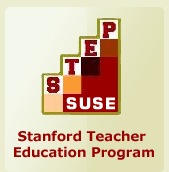Better Direction Needed: Stanford's New Teacher Loan Forgiveness Program
Blog Post
Oct. 4, 2006
Stanford Universitys new teacher loan forgiveness program is offering hope for talented students eager to become well-trained teachers, but frightened of the schools staggering cost. (Disclosure: Stanfords Education Policy Program is the alma mater of Higher Ed Watch staff.) Stanford has matched a $10 million private gift to create a $20 million loan forgiveness program for students in the Stanford Teaching Education Program (STEP). Support from the university is intended to expand access to STEP and should be commended. But Stanford could have done much more to direct graduates towards those schools most in need of high-quality teachers.

Stanford students may borrow up to $23,000 in federal student loans for their undergraduate work and an additional $18,500 per year in Stafford student loans for their STEP graduate work. The university estimates that the typical STEP graduate student will assume between $15,000 and $20,000 in additional Stanford private loans on top of federal debt. Currently, much of that federal loan debt may be forgiven for new teachers. Now additional Stanford debt may be forgiven as well.
After five consecutive years of teaching, students employed as teachers in low-income schools can receive up to $5,000 in federal Perkins loan forgiveness, and those employed as math, science, or special education teachers in low-income schools can receive up to $17,500 in additional federal Stafford loan forgiveness. Now, after two years of teaching in any public school or a low-income private school, half of Stanfords private loan will be forgiven. After four years of teaching, the entire loan will be cancelled.
Will Stanfords effort have positive effects and who will be helped? Stanfords initiative certainly will help around 70 well-educated, high-quality students enter teaching each year. It will be particularly helpful to those who work in low-income public schools, since it will supplement federal loan forgiveness initiatives.
But the STEP program will now provide private loan forgiveness to students that teach in any public school. Higher Ed Watch fears that Stanford will continue disproportionately training students from privileged backgrounds, training much better than other future teachers, and supporting them in working in privileged schools. Stanford deserves applause, but let us recognize that first and foremost, Stanford is helping Stanford.
The important question is not whether there will be any positive effects to Stanfords new teacher loan forgiveness initiative. The important question rather is how large will those effects be, who will be helped, and will the help validate the programs cost? One thing is for sure: that $20 million investment could be better directed by Stanford to support the schools most in need of high-quality teachers.
East Palo Alto, California needs help, Marin County does not.